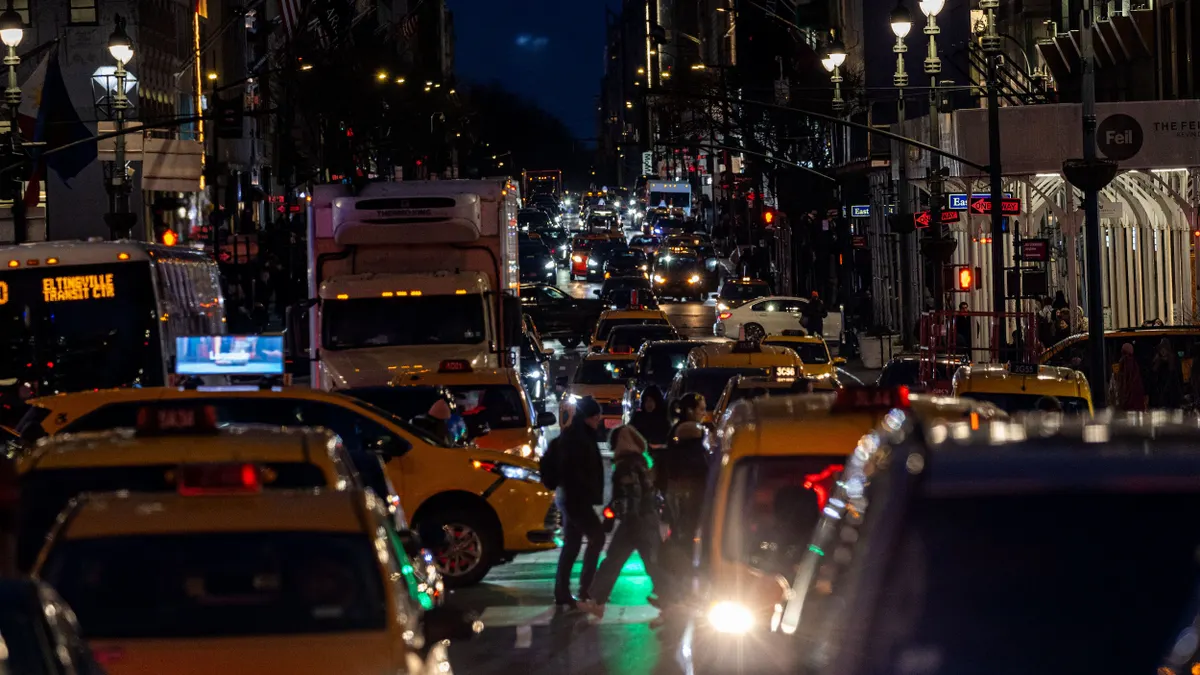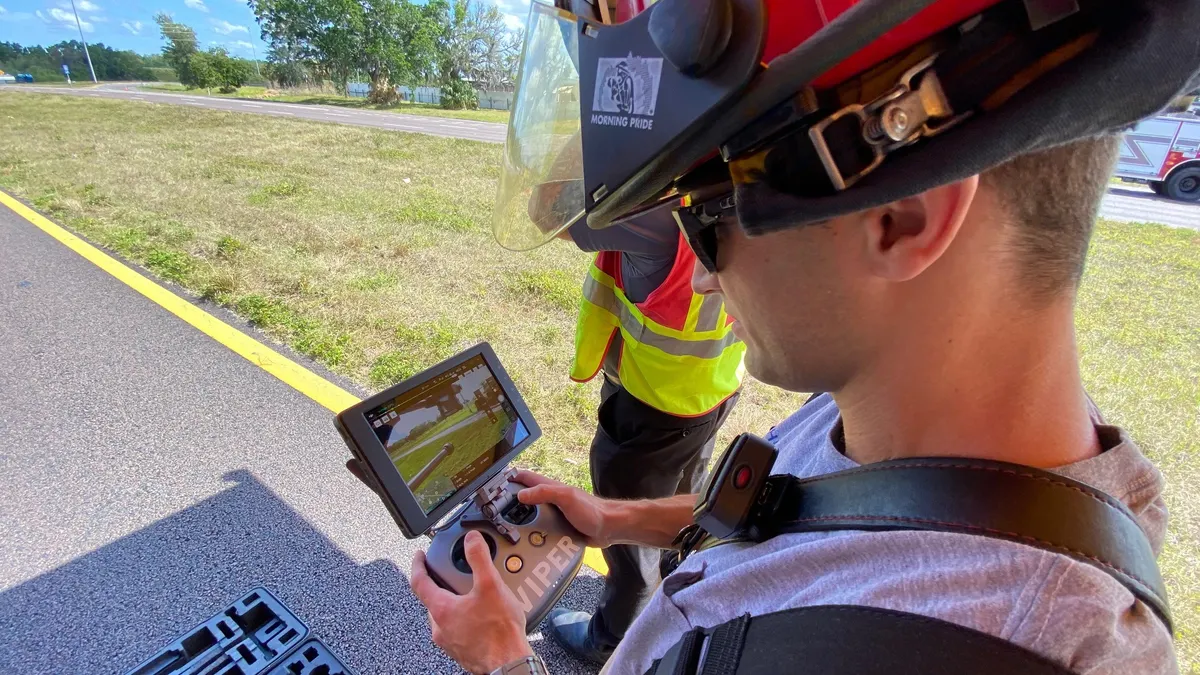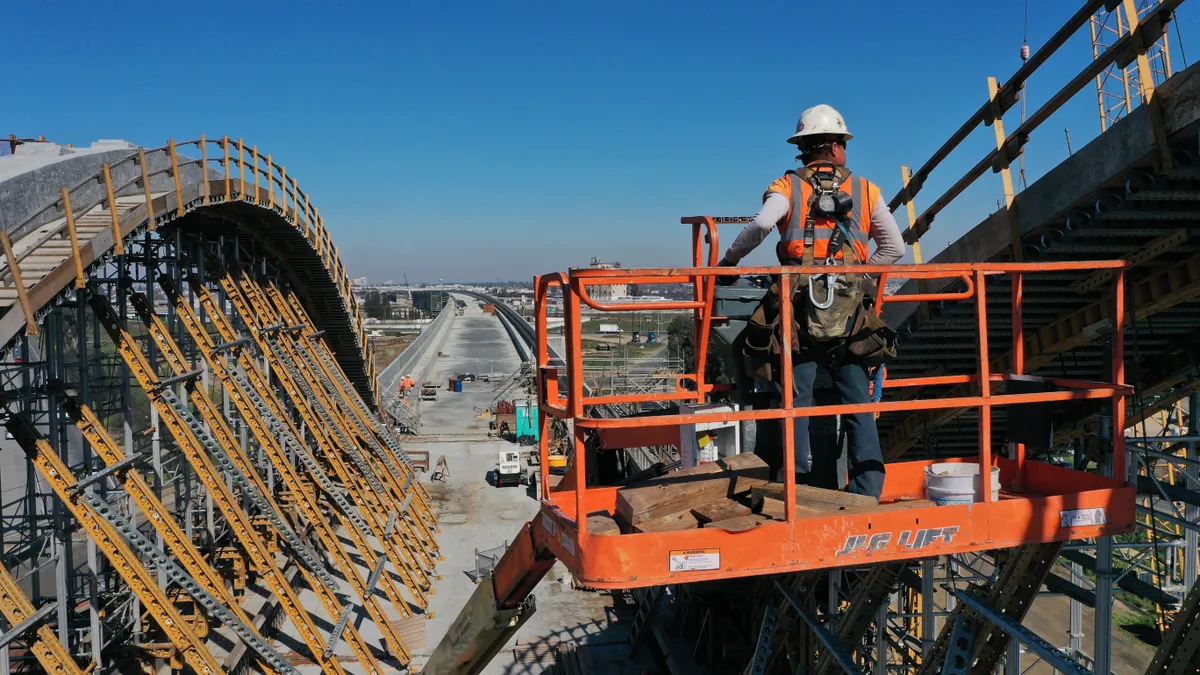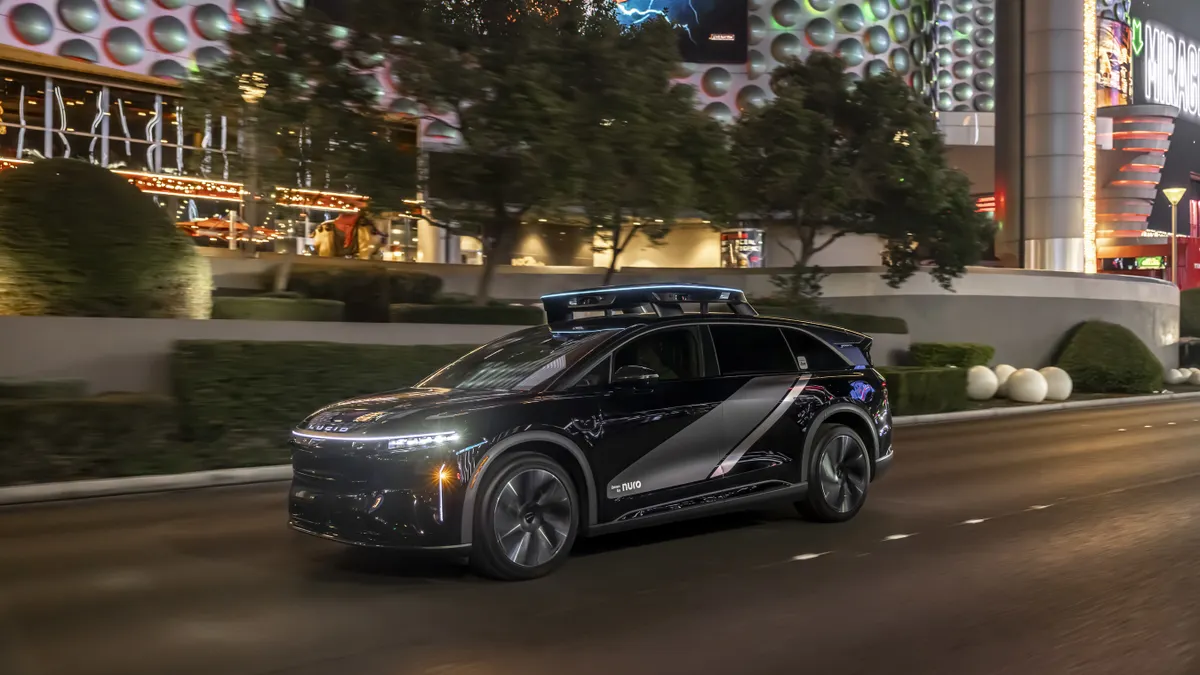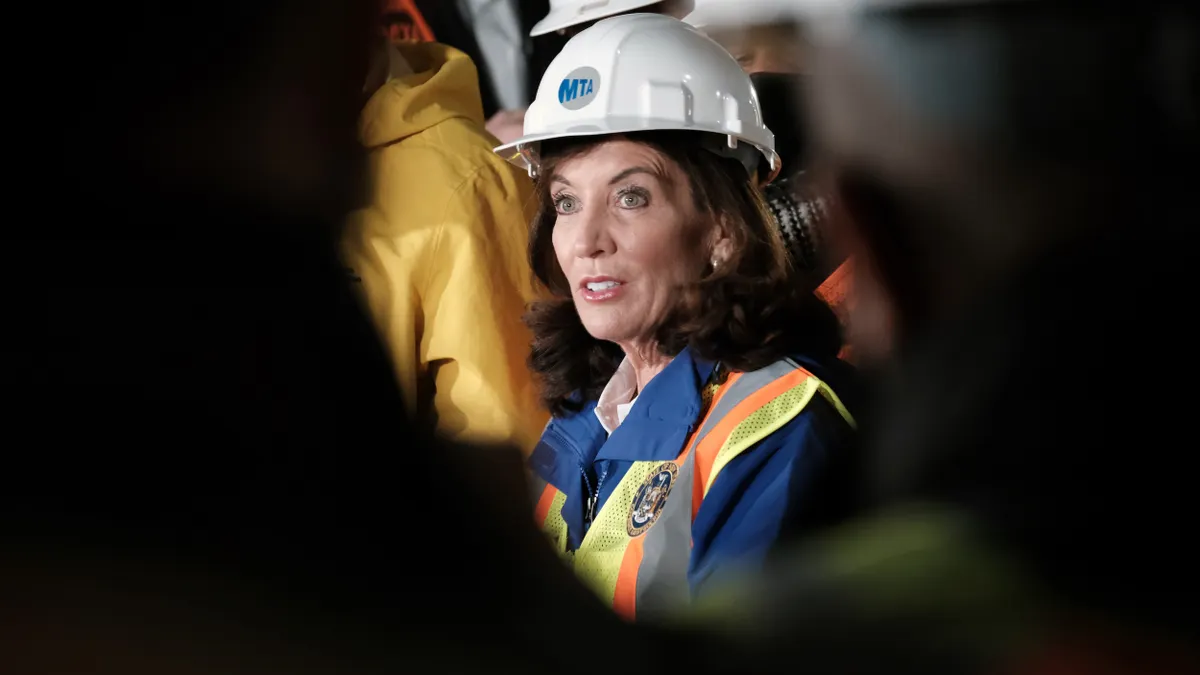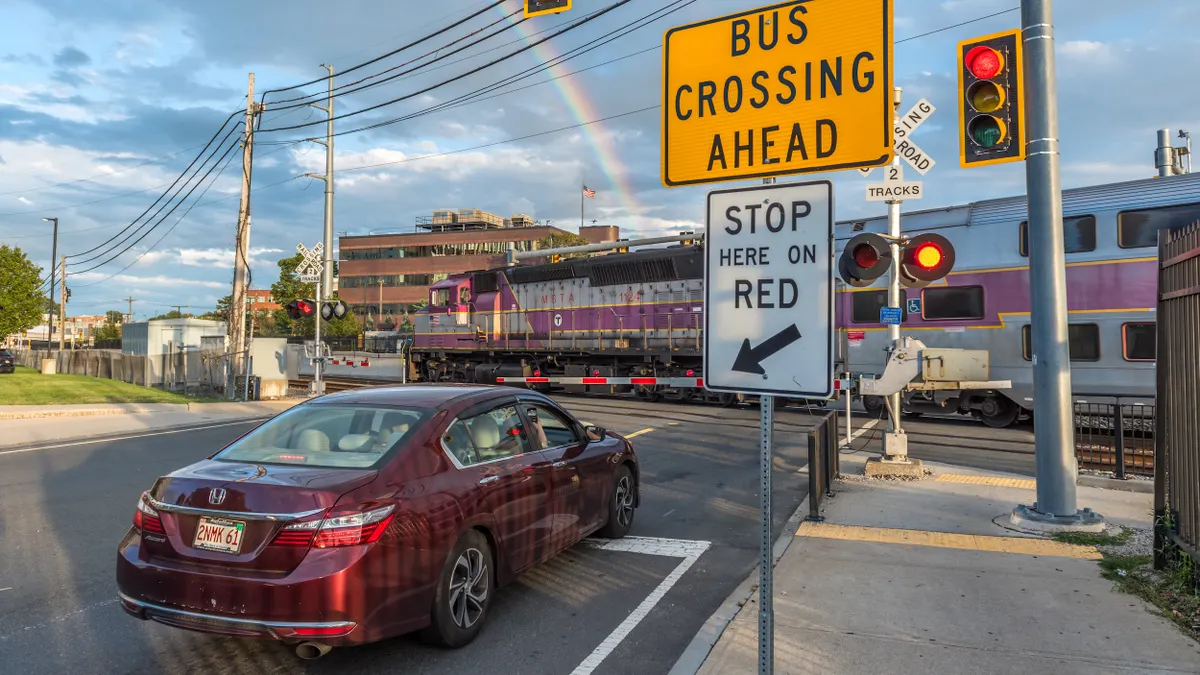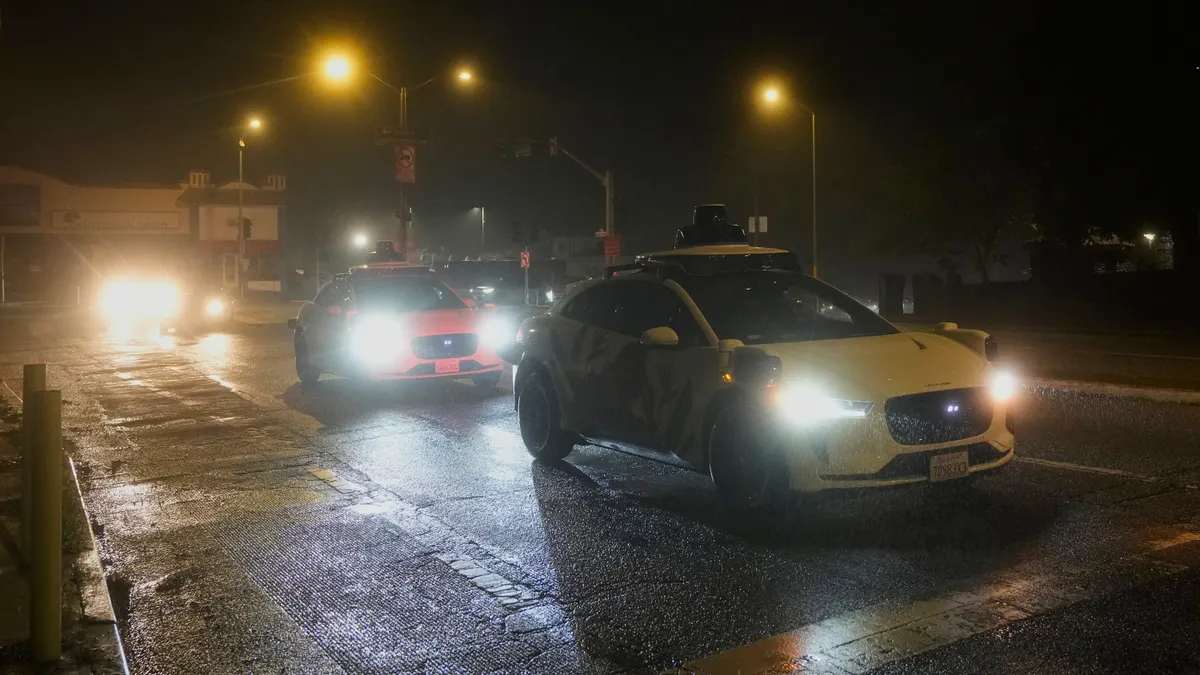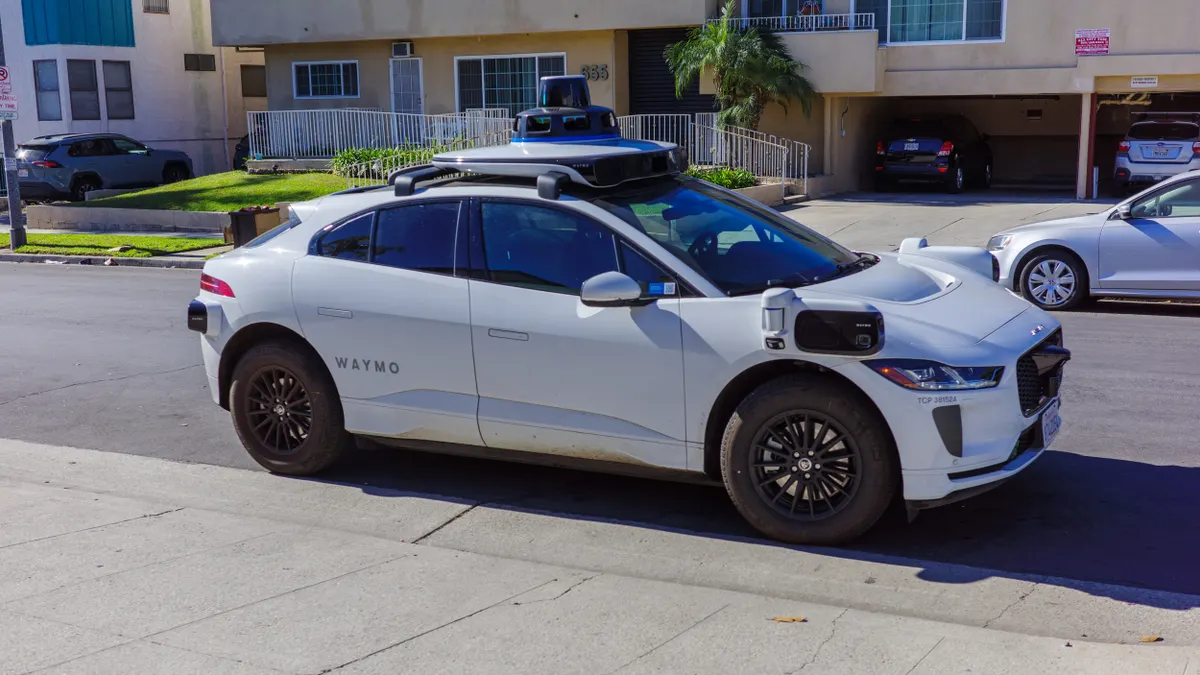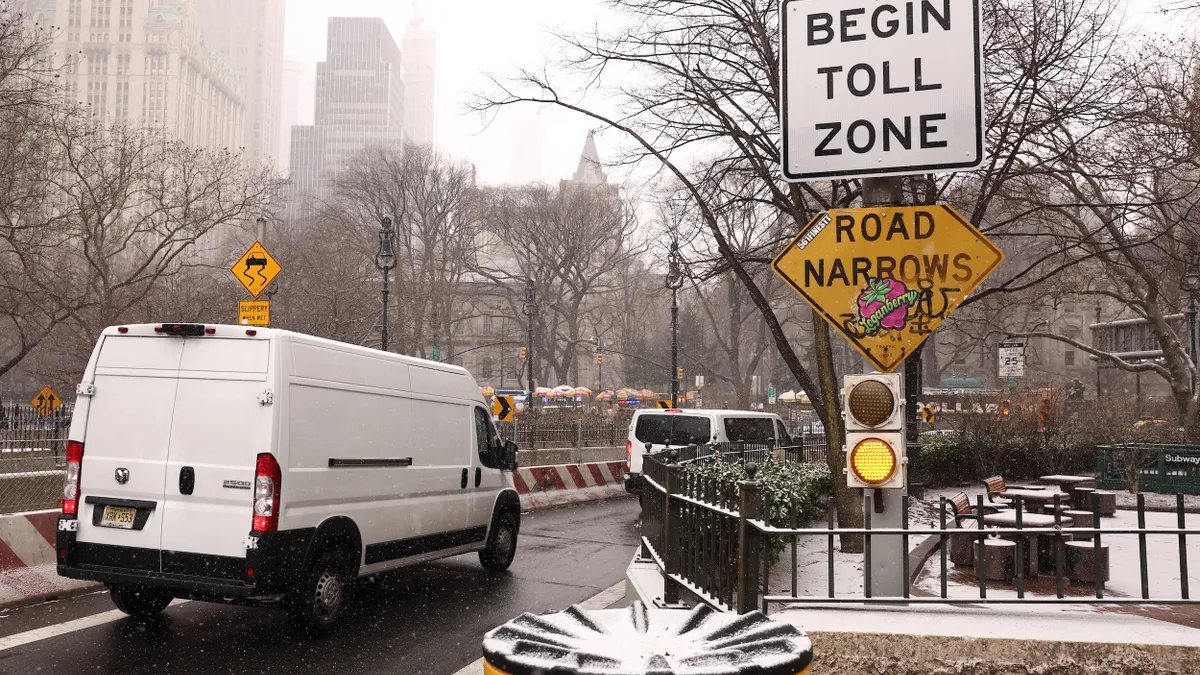Editor's note: This article was originally published in American City & County, which has merged with Smart Cities Dive to bring you expanded coverage of city innovation and local government. For the latest in smart city news, explore Smart Cities Dive or sign up for our newsletter.
Despite a nationwide push for Vision Zero — the initiative to eliminate traffic deaths and serious injuries by lowering speed limits, building safer crosswalks and bike paths, employing speed cameras, and more — multiple cities have been reporting that the policy is failing, and traffic-related fatalities are actually on the rise in some locations.
In Los Angeles, 303 people died in traffic accidents in 2024, up from 240 in 2015, the year the city launched Vision Zero. A newly released audit blamed the increase on a lack of cohesion across city departments, insufficient political support and an imbalanced approach to implementation.
In Washington, D.C.,traffic fatalities hit a 16-year high in 2023, with 52 deaths and 363 major injuries reported. Fatalities in D.C. have risen in all but two years since Vision Zero was adopted in 2015.
In Charlotte, N.C.,a 2024 audit reported that Vision Zero was failing to have a significant impact despite pouring millions of dollars into the program since 2019. Noting that the Charlotte Department of Transportation had not fully implemented key components of the Vision Zero action plan, the audit reported 125 deadly crashes in 2022, up from 81 in 2020.
While there’s no denying such statistics are staggering, it is essential to recognize that Vision Zero is much easier to pledge than it is to implement. One of the biggest obstacles to success is institutional inertia. Many cities and counties still operate under a “mobility first” mindset that prioritizes vehicle throughput over safety. This culture is reinforced by outdated engineering standards which emphasize wide lanes and high-speed designs, both of which directly contradict Vision Zero principles.
Compounding this situation is the structure of most local governments. Vision Zero requires a holistic approach that includes lowering speed limits, redesigning streets to prioritize safety and promoting safe driver behavior. Because government operations across planning, engineering and enforcement tend to be siloed, however, the coordinated effort Vision Zero demands is difficult to achieve.
Funding represents yet another impediment to Vision Zero’s success. Because funding priorities typically favor highway expansions over safety retrofits, jurisdictions often find themselves without the necessary financial resources for infrastructure improvements, education campaigns and enforcement efforts. As a result, some cities may prioritize certain aspects of Vision Zero over others, leading to an unbalanced approach. Many jurisdictions are also dealing with reduced traffic enforcement due to police staffing shortages, lack of prioritization, or concerns about over-policing.
Finally, political sensitivity and public resistance play a key role. Lowering speed limits or reducing lane widths are sometimes perceived as government overreach or as threats to traffic flow. Sadly, elected officials often find it difficult to sustain Vision Zero policies in the face of rising public complaints about commute times and traffic bottlenecks.
While resistance within transportation agencies, government siloes, budgetary constraints and political compromise or turnover have caused Vision Zero initiatives to lose momentum in some U.S. cities — particularly when initial results failed to meet ambitious expectations — others have experienced sharp declines in traffic deaths. Hoboken, N.J., for example, achieved eight consecutive years without a traffic-related death. Austin, Texas, saw a 22% reduction in fatal and serious injury crashes at targeted intersections and a 17% reduction in crashes on a pilot road redesign project. Philadelphia experienced a 34% reduction in fatal and serious injury crashes in locations with safety changes, including road diets and separated bike lanes.
Total U.S. traffic deaths also declined 3.8% in 2024 to 39,345, the lowest number recorded since 2020, although still higher than 2019 levels.
Vision Zero efforts that have succeeded have done so largely because jurisdictions have adopted a multi-pronged approach that includes:
Education: Public campaigns and school-based programs designed to raise awareness about safe behavior and shared responsibility.
Engineering: Complete Streets designs (such as protected bike lanes, raised crosswalks and daylighted intersections) to physically create safer environments for all users.
Enforcement and legislation: Automated speed enforcement and revised speed limit laws that help ensure compliance without overburdening law enforcement; and
Equity-based investment: Data employed to direct safety upgrades in historically underserved communities.
Success then lies in integrating these strategies, not in treating them as standalone fixes. I would argue, however, that if the U.S. is ever going to make significant, across-the-board progress toward advancing Vision Zero’s goal of zero traffic fatalities, decisions regarding our transportation systems must recognize the realities of physics, namely that the human body is frail and vulnerable to a transportation system that prioritizes throughput over safety. In short, a person hit by a vehicle traveling 35 mph is far more likely to die than a person hit by a vehicle traveling 20 mph.
We already know how to remedy this situation. By reducing speeds, we can reduce the frequency and severity of crashes. And reducing speeds can be achieved by implementing Vision Zero’s proven strategies. As a nation, though, we have lacked the political and public will to make Vision Zero a reality.
While the U.S. may be different in terms of scale, vehicle dependency and governance than countries such as Norway where Vision Zero has been extremely successful, that doesn’t mean the policy is doomed to failure here. What is needed in the U.S. is a shift in values. We must be willing to prioritize human life over speed and convenience. If we adopt safety-focused design standards for our roads, fund projects accordingly and engage communities transparently, there is no reason the U.S. cannot replicate the success Vision Zero has enjoyed elsewhere.
Commentary is a space for state and local government leaders to share best practices that provide value to their peers. Email Smart Cities Dive to submit a piece for consideration, and view past commentaries here.
About the Author
Wes Guckert, PTP, is president and CEO of The Traffic Group, a leading Service-Disabled Veteran-Owned Small Business (SDVOSB) traffic engineering and transportation planning firm serving clients nationally and internationally. He is also a fellow of ITE and on the National Small Business Leadership Council.



